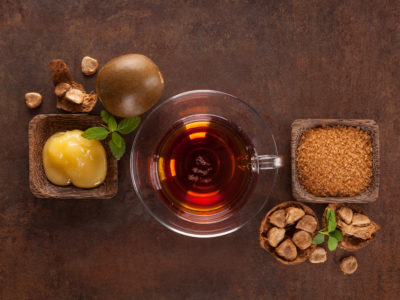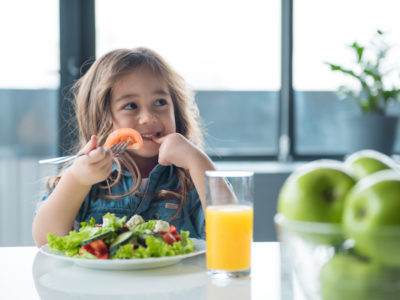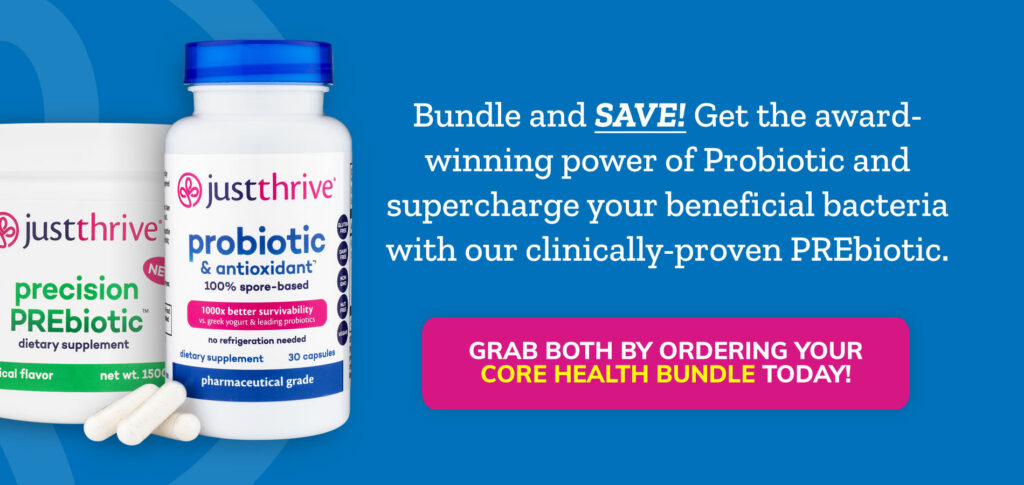Table of Contents[Hide][Show]
As we get ready to kick off a new school year, parents once again face the challenge of packing lunches that are nutritious, healthy… and that their kids will actually eat!
And whether you’re rushing to prepare lunchboxes in the morning, or you take your time the night before, it’s tempting to fill up your kid’s lunchbox with convenient, pre-packaged snacks that seem healthy.
Labels such as “made with real fruit” and “no added sugars” seem healthy, and it’s easy to think that these lunchtime snacks are nutritious.
But not all snacks are as good for your kids as they may appear. And some may be doing them more harm than good.
In fact, one recent study by consumer reports showed that Lunchables and similar snack packs contained lead, cadmium, and other heavy metals.
And even kids’ snacks without toxic chemicals often contain too-high levels of unhealthy ingredients such as sodium or sugar, along with harmful dyes or artificial sweeteners.
So what should you pack in your kid’s lunchbox? And what needs to stay on the store shelf?
Let’s take a closer look at some common kids’ foods that aren’t as healthy as they seem, plus some healthy snack ideas for kids that you can pack, instead.
With a little planning and creativity, you can provide your child with a lunch that’s good for their growing body—and tastes great, too!
1. Lunchables
We’ll start with Lunchables, since we’ve already mentioned them.
With easy-to-eat pre-packaged finger foods such as cheese, crackers, deli meats, and the occasional sweet treat, they seem like a balanced, healthy lunch option. But the truth about Lunchables is very different from what their bright, appealing packaging might make you think!
Why Your Kids Shouldn’t Eat Them
Lunchables are far from a healthy lunch option for your kids.
For one thing, deli meats are often overprocessed and contain nitrates and nitrites. These two toxic chemicals have been associated with a slew of potential health issues, including an increased risk of cancer.
And the crackers in Lunchables contain gluten, an incredibly triggering substance for many young stomachs, affecting up to 6% of children worldwide. Even if your child isn’t allergic to gluten, they may have a sensitivity that can lead to digestive issues.
Both the crackers and desserts in Lunchables contribute very little to your child’s nutritional needs while being high in sodium, sugars, artificial flavors, and other unnecessary ingredients.
What to Pack in Their Lunchbox Instead
A homemade bento box is a much healthier way to put together a charcuterie-style lunch for your child. Ingredients such as whole-grain or gluten-free crackers, lean turkey or chicken breast, bite size veggies, and grass-fed cheese cubes make for a delicious balanced lunch. Add fresh fruit for a sweet but healthy dessert.
2. Granola Bars
Easy to grab on-the-go, ingredients such as oats and nuts, high protein… What’s not to love about granola bars?
A lot, apparently!
Why Your Kids Shouldn’t Eat Them
Believe it or not, granola bars are closer to candy bars than health foods!
Granola bars are often packed with sugar, in ingredients such as high-fructose corn syrup, honey, and even chocolate chips. Unfortunately, these ingredients also add unnecessary empty calories.
Even worse, the ones that are labeled “low sugar” often include artificial sweeteners and unnatural fillers to add flavor. The chemicals they contain often do more harm than natural sugar would.
Add to these ingredients additives and preservatives to extend their shelf life, and there’s no doubt that there are much better lunchbox options for your kids.
What to Pack in Their Lunchbox Instead
What does your child like most about granola bars? Let that guide your search for a replacement.
Suggestions include dried fruit (made in your oven or air fryer) and whole nuts or seeds. You can even try your hand at making your own granola or granola bars with your child’s favorite ingredients.
If you still want to go with store-bought granola bars, there are healthier options out there, you just have to do your research and read the labels. Look for those with clean, minimal ingredients and lower in sugar (especially added sugar).
Related
A Sweet Countdown – Sweeteners And Sugar Alternatives Ranked From Best To Worst!
What are the best (and worst) sugar alternatives out there? We break down what to eat to satisfy your sweet tooth while staying healthy.
3. Gummy Fruits
If you’ve been to a playdate, playground, or anywhere else with snacking kids, you’re familiar with fruit snacks. Everyone from toddlers to teens seems to be a fan of this chewy, fruit-flavored gummy snack.
But are gummies healthy snacks for kids?
Why Your Kids Shouldn’t Eat Them
Gummy fruits may appear to be healthy with packaging and labels boasting claims such as “made with real fruit” or “100% vitamin C.”
But a closer examination of the ingredients reveals that these snacks are far from healthy.
Many fruit snacks are loaded with harmful ingredients such as sugar, corn syrup, and artificial flavors. And their bright colors, which are meant to appeal to children, often come from harmful artificial colors such as Blue No. 1, Red No. 40, Yellow No. 5, and Yellow No. 6.
The sugar content is enough to create a quick energy boost, followed by a sugar crash that can alter your child’s mood, focus, and energy for the rest of the school day.
The actual fruit content is minimal, at best, and lacks some of the healthy fibers and nutrients found in whole fruit.
What to Pack in Their Lunchbox Instead
Real fruit or veggies! Try carrot or celery sticks, organic berries, and fruits such as apples that can hold up in your child’s lunchbox.
You can also make homemade dried fruit snacks in the oven or air fryer. In an airtight container, they’ll last up to six months and will be a delicious addition to your child’s lunchbox.
4. Sports Drinks
Sports drinks, such as Gatorade, are a staple at sporting events—and not just for kids’ games. Adult athletes drink them, too.
If your kid has P.E. class or likes to run around during recess, sports drinks may seem like a hydration essential.
But are they really the best way to keep your kid hydrated?
Why Your Kids Shouldn’t Drink Them
Sports drinks contain electrolytes like sodium and potassium, which are important for hydration, especially after intense physical activity.
Unfortunately, the artificially bright colors and flavors that make sports drinks so appealing to children can also make them toxic, causing allergic reactions and behavioral issues.
And, sports drinks are packed with added sugars. The high sugar content can lead to uncontrollable energy spikes—which don’t work in a school setting—followed by crashes that can make your child feel sluggish, sleepy, and unable to concentrate on schoolwork.
What to Pack tn Their Lunchbox Instead
Coconut water is an excellent alternative to popular sports drinks! It provides natural electrolytes, such as potassium, sodium, and manganese, without the “extras”—sugar and artificial ingredients—found in Gatorade and similar drinks.
With its slightly sweet taste, coconut water will keep your kids happy and hydrated during their school day.
5. Veggie Chips
If it has the word “veggie” in it, it must be healthy, right? Let’s find out!
Why Your Kids Shouldn’t Eat Them
Veggie chips and veggie straws are usually made from vegetables such as carrots, spinach, and sweet potatoes. Even their colors are a reference to their supposed healthiness: muted shades of green, orange, and other colors meant to mimic natural vegetables.
But despite their healthy-sounding name, veggie chips are not much better for your kids than traditional potato chips. Most veggie chips contain very little vegetable content; they’re made from vegetable powders or puree.
And, they’re processed with unhealthy amounts of oils, salts, and natural and artificial sugar, so they’re often high in sugar, low on nutrition. They can even contain artificial additives, for flavor, or artificial colors, both of which can be toxic for your kids.
What to Pack in Their Lunchbox Instead
Fresh veggies! The earlier you help your child’s taste buds get accustomed to the taste of real vegetables, the better!
Fresh veggie sticks, made from carrots, celery, cucumbers, or sliced bell peppers, are filled with the nutrients your kids need, including fiber, vitamins, and minerals.
Add hummus for dipping, with its healthy fats and protein, for a satisfying, balanced lunchbox staple.
Related
Is Yogurt Good for Gut Health?
Is good for gut health? Discover the benefits and drawbacks of probiotic food. Plus, learn what to stay away from when choosing your yogurt.
6. Yogurt and Yogurt Smoothies
In an ideal world, yogurt would be a healthy snack option for your children, providing them with calcium, protein, probiotics, and other healthy ingredients.
But the world isn’t ideal, and unfortunately kids’ yogurts especially (and yogurt smoothies) are far from healthy.
Why Your Kids Shouldn’t Eat Them
The yogurts marketed to kids, with their bright, cartoonish packaging, are very different from the healthy yogurts sold for adults.
Kids’ yogurts and smoothies usually come in flavors specifically chosen to appeal to children. Unfortunately, these flavors come from ingredients such as syrups, fruit purees, and artificial sweeteners, which decrease its health benefits while unnecessarily increasing the sugar content.
And that hot pink/neon green swirl of color—also appealing to children—comes at a high price: the addition of artificial colors, many of which can cause behavioral issues, digestive troubles, and worse.
What to Pack in Their Lunchbox Instead
If your kids like their lunchtime yogurt, make the switch to plain Greek yogurt. It’s rich in protein and is probiotic-friendly, supporting your child’s gut health without the toxic ingredients found in kids’ yogurts.
You can add some fresh fruit like berries, nuts/nut butters, seeds, cacao nibs, coconut flakes, and other healthy toppings, too, to add natural sweetness and some crunch without excessive sugar and artificial flavors.
Final Thoughts
You don’t have to choose between taste and nutrition!
It really is possible to pack a healthy lunchbox, one that will have your kids eagerly awaiting lunchtime every day. Just remember to focus on simple, organic ingredients that are high in nutrients but low in calories, sugar, artificial colors, and other toxic ingredients.
At the same time, remember to read labels carefully, avoiding unpronounceable ingredients, artificial sweeteners, and anything that’s overprocessed.
Fresh veggies, plain nuts, and some sweet, juicy fruit will score you a win at the lunch table, every time!
You May Also Like…






